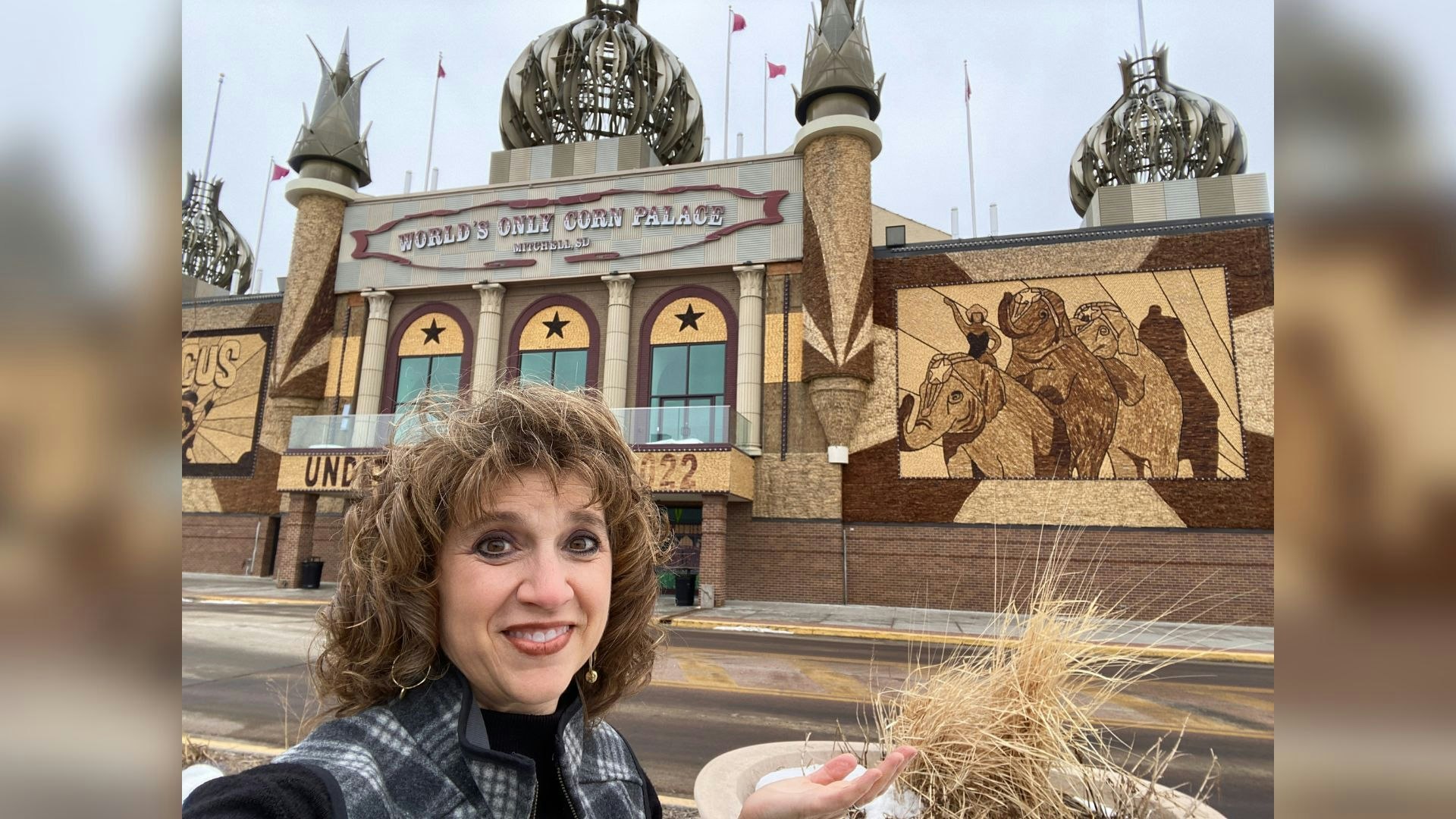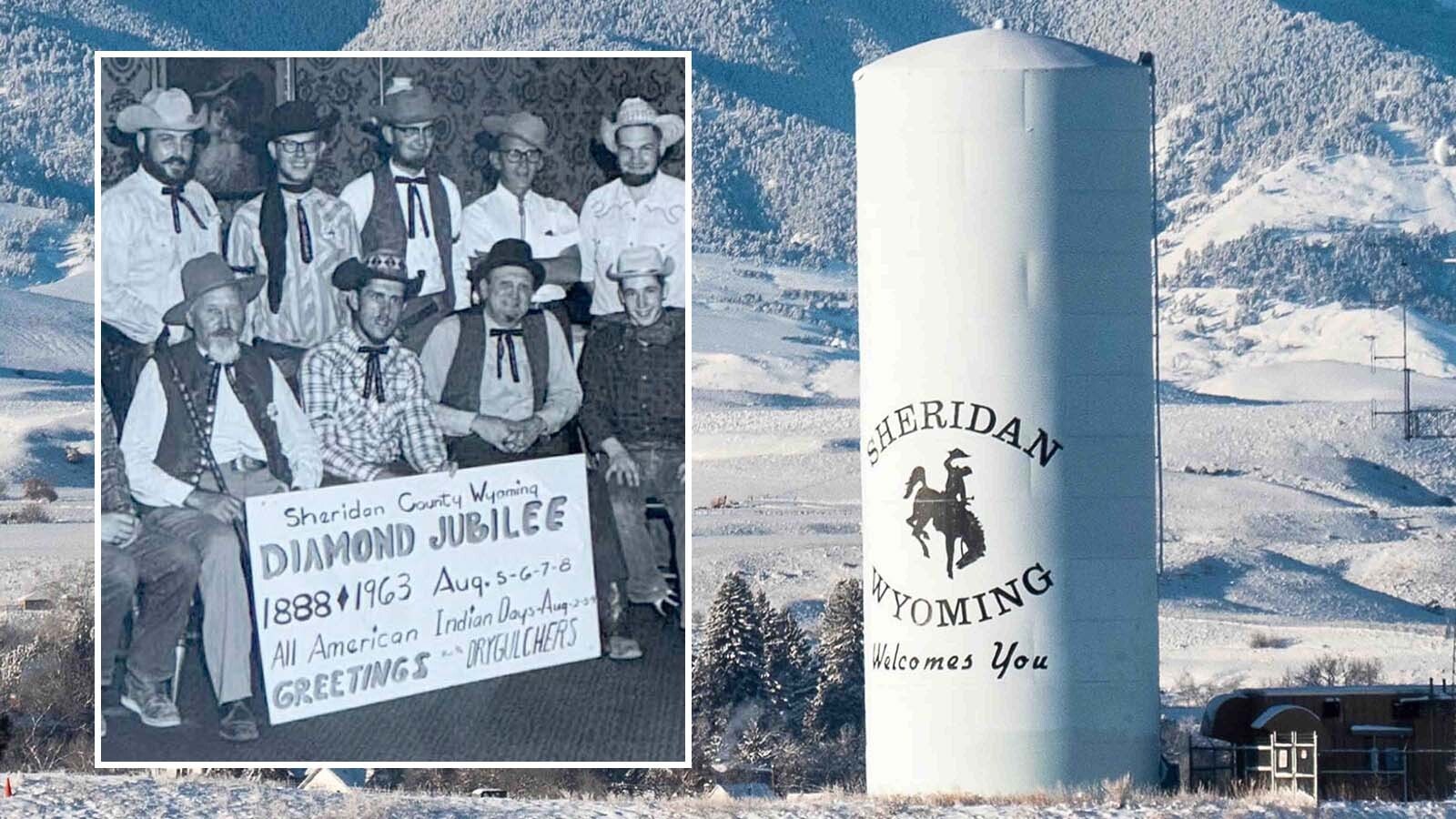Editor’s Note: Cowboy State Daily features writer Wendy Corr is traveling across the country as a musician with Cody-based Dan Miller’s Cowboy Music Revue. Wendy will report regularly from the road about people and places within reach of the Cowboy State.
The trio of Dan Miller, Wendy Corr and Stephanie Streeter – aka Dan Miller’s Cowboy Music Revue – was in Mitchell, South Dakota, last week as part of their winter music tour, which has taken them from Montana to Colorado to New Mexico to Wisconsin and seven other states.
The Wyoming-based band members have sauntered down small-town streets in the Midwest, taken in breathtaking views from mountaintops and have white-knuckled their way through blizzards. They’ve taken selfies at the cabin where Dr. Brewster Higley wrote “Home On the Range,” in front of the world’s largest ball of twine and at the feet of the Jolly Green Giant.
But few roadside attractions have been as impressive as the one and only Corn Palace.
The center of Mitchell’s cultural life, the first Corn Palace was established in 1892 as a celebration of the town’s agricultural heritage. More than 500,000 people each year pay homage to the outstanding artistry and impressive engineering behind the murals that completely cover the outside walls of the 43,510 square foot structure.
The murals – made entirely of halved cobs of corn in various shades – are taken down and replaced each year following the city’s annual Corn Palace Festival in August.
Celebrating Agriculture
The original Corn Palace was known as the “Corn Belt Exposition” and built in 1892 to encourage people to settle in the region.
“Originally, it was created as a meeting place for after the harvest season,” said Tiffany Batdorf, director for Mitchell’s chamber of commerce and visitor’s bureau. “They wanted to have some type of community event to gather all the local farmers and kind of celebrate. So, it was a place to come and share, just kind of meet your neighbors.”
The original wooden castle was built on land donated by Louis Beckwith on Mitchell’s main street. Another version of the structure was constructed in 1905, before the current location was settled on in 1921.
Russian-style onion domes and Moorish minarets completed the palace’s distinctive look in 1937.

Designing The Murals
It takes about 325,000 ears of corn to create the murals every year. Local farmers grow the 12 naturally occurring shades of corn used to make the images, as well as other grains and grasses.
The corn palace’s website lists the themes of the murals that have adorned the outer walls of the building since 1892. In recent years, the original artwork has been created by digital media and design students at Dakota Wesleyan University.
“They create this kind of paint-by-numbers – or corn-by-numbers,” said Batdorf, explaining that once the previous year’s corn is removed after the Corn Palace Festival each August, a new design is traced on to the walls in preparation for doing it all again.
Batdorf said in the months of September and October the “corn installation team” begins its work.
“We basically have a group of young kids, normally younger adults, that come in and cut the ears in half,” she said. “We have a little machine you run it through, and it cuts them in half and they nail it to the walls on the outside.”
At last count, 1.5 million nails are used to attach the half-ears to the structure each year.
The Corn Won’t Pop
A local myth, often told to mislead unsuspecting tourists, is that the corn displayed on the palace walls could pop if summer temperatures rise high enough.
Of course, that outcome is impossible no matter how hot it might get, as the murals are created from field corn, not popcorn.
However, heat did damage the iconic structure in June 1979, when an arsonist set fire to the building’s front roof, forcing the closure of the attraction for a short period.
Center Of Mitchell’s Identity
People who live in Mitchell don’t squander their most famous property. Batdorf said the venue is nearly continuously booked.
“We have our high school and college events that go on, we’ve even had a rodeo inside,” she said.
Local organizations also hold fundraisers in the space, and community leaders will hold meetings and presentations as well. A weekly farmers market is set up there every Wednesday evening in the summer.
“It is a multipurpose venue,” said Batdorf. “We have concerts there every summer, we have our outdoor stage that goes along with that as well.”
The town of Mitchell’s identity is so wrapped up in the Corn Palace that the local high school mascot is the Kernels, along with the popular Cornelius, someone dressed as a giant ear of corn.
“It’s something that’s more than just that wall of corn,” said Batdorf. “It means a lot to the community.”





